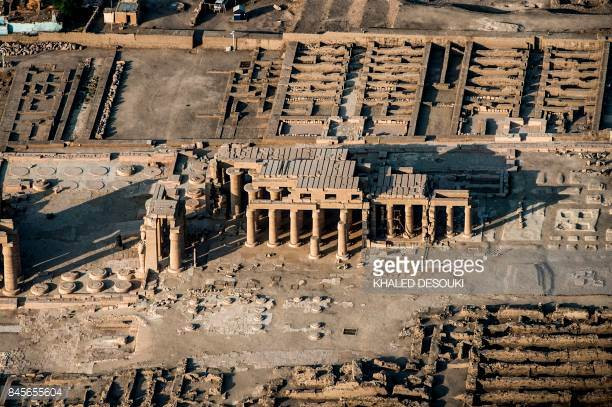More evidence of thousands of years old in Egypt
On October 4, archaeologists discovered the upper part of an ancient stone tower from the Pharaoh period dating back about 4,300 years in Saqqara district, on the outskirts of Giza province, south of Cairo.
Mostafa al-Waziri, said that the upper part of the tower was found to belong to the ancient Egyptian queen Ankhesenpepi II , the mother of Pharaoh Pepi II of the Dynasty. Friday ruled Egypt from 2278 to 2184 BC.

Archaeologists have discovered the upper part of an ancient stone tower from the Pharaoh period dating to about 4,300.(Photo AFP).
In a statement Mr. Waziri said, the queens of the Sixth Dynasty often used two pyramid stone columns to decorate at the entrance of their burial grounds. However, this stone pillar is found to the east of the queen pyramid and the Ankhnespepy II cemetery. This proves that the stone column has been removed from the original position. The discovery is the result of a study by a French and Swiss archaeological team from the University of Geneva in a joint project with the Egyptian Antiquities Ministry.
The head of the archaeological team of the University of Geneva, Professor Philippe Collombert, added that the upper part of the tower was made of pink granite, 2.5 m high. This is the largest fragment of a stone pillar from the Ancient Kingdom era. Estimate the full size of this stone column about 5m.
SCA Secretary General Waziri said that there were some characters on the stone pillar and it seemed to be the beginning of the title and the name of Queen Ankhnespepy II, and said that Queen Ankhnespepy II " probably The first queen is engraved with texts on her pyramid. "
He explained, before Queen Ankhnespepy II, such inscriptions were carved only on the pyramids of the kings. After Ankhnespepy II, some wives of King Pepy II were also carved on the tomb.
Saqqara district of Giza province is home to many pyramids and the famous Memphis ruins of ancient Egypt. This year, archaeologists continue to record many results in the study of ancient Egypt.
Last May, Egyptian archaeologists discovered a burial chamber of the 13th Dynasty pyramid at the Dahshur archaeological site in Giza province, dating back more than 3,600 years. Also this month, a Spanish archaeological group found the remains of a burial site near 4,000 years old outside an ancient tomb in Luxor city. In early March, a team of Egyptian and German experts also found a 3,000-year-old stone statue believed to be of Ramses II in Cairo's Matariya district.
- Evidence of homosexual sex in ancient Egypt
- Is the plane from ancient Egypt?
- Evidence of alien existence
- Join hands to decode ancient documents
- Evidence of 'brain drain' in ancient Egypt
- Great inventions of ancient Egypt
- Evidence of Chinese silk production from 8500 years ago
- Detecting strange 5,500-year-old fingerprints on ancient ceramic pots
- Discovered the grave of dentists in ancient Egypt
- Pyramid not built by slaves?
- Discovered 3,700 year old remains of women about to give birth in Egypt
- Discovering the great treasure of ancient Egypt
 Discovered an ancient centipede fossil 99 million years old
Discovered an ancient centipede fossil 99 million years old Discovered bat-like dinosaurs in China
Discovered bat-like dinosaurs in China Discovered a 200-year-old bronze cannon of the coast
Discovered a 200-year-old bronze cannon of the coast Discover 305 million-year-old spider fossils
Discover 305 million-year-old spider fossils